Xenoestrogens are foreign chemicals that act like estrogen and bind to the estrogen receptors of cells in your body. They disrupt the endocrine system (which is responsible for hormone production), leading to disease, the growth of adipose tissue (fat) and infertility in humans and animals of all ages.
As you probably know, estrogen is a sex hormone that that plays a vital role in both men and women.
In women, estrogen is made by the ovaries and its production is influenced by the availability of other hormones (such as LH and FSH), which are released by the pituitary gland. It’s responsible for the development of the female reproductive system and breast growth, and it’s also involved in keeping your brain, bones and cardiovascular system healthy.
In men, estrogen is responsible for making sperm and influences libido and erectile function, among other things.
What you might not know is that every cell has an estrogen receptor. In other words, this hormone can relay information to — and thus, influence the operation of — any cell in your body.
That’s why exposure to xenoestrogens can have such a powerful (and negative) impact on health and well-being: it disrupts your endocrine system, which harms your reproductive system and increases your risk of several metabolic diseases, including cancer.
And while you may not have heard of xenoestrogens, I can guarantee you one thing with absolute certainty: you’re exposed to these estrogenic toxins every single day of your life.
Xenoestrogens Make You Sick Slowly
The problem with xenoestrogens is that they don’t make you sick right away. Their effects are so gradual that we often don’t even notice what’s happening to our bodies until it’s too late.
When you eat spoiled food, you usually experience the consequences within hours. If you overeat processed carbs for weeks in a row, you’ll likely gain a few pounds.
But the damage caused by xenoestrogens is sometimes unnoticeable for years or decades, and research suggests that it can even affect your descendants via inherited damage to their DNA and epigenetics.
Seven Ways Xenoestrogens Make You Sick
To understand the different ways that xenoestrogens make you sick, there are a few key facts you need to know.
- Xenoestrogens (which are also called estrogenics) can impact almost every cell in the body (because every cell has an estrogen receptor).
- Xenoestrogens are stored in fat, and can remain there for a very long time (sometimes, even for years).
- Some of the damage xenoestrogens cause to our DNA and epigenetics (the layer on top of our DNA that influences gene expression) can be inherited. So your exposure to xenoestrogens might significantly increase the risk of obesity, cancer and infertility in your children, grandchildren and descendants.
So let’s talk about the specific health issues that are associated with exposure to estrogenics.
1. Fat Gain (Or the Inability to Lose Weight)
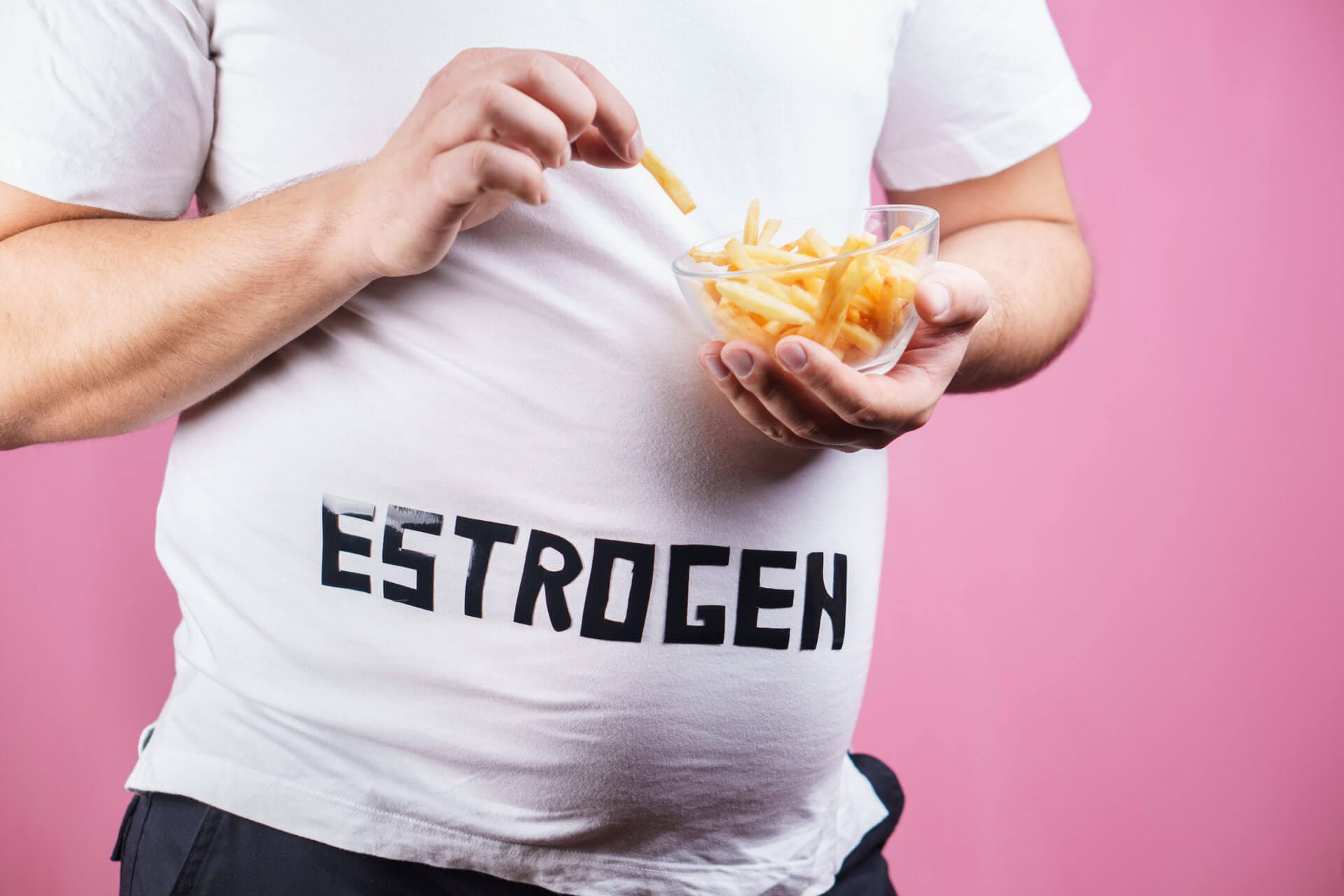
One of estrogen’s important functions is telling cells to store fat in expectation of an upcoming pregnancy. If you continuously expose your body to hormone-disrupting chemicals that mimic estrogen, your body is constantly storing fat for a pregnancy that may never materialize — especially if you’re male.
As a result of that cumulative exposure to estrogen, we see girls starting puberty much too early, and men developing breast tissue (known as “man boobs”) and/or potbellies.
So if you’re eating well, sleeping well and exercising regularly (in other words, living an all-around healthy lifestyle), yet still can’t seem to shake off those extra pounds, then environmental estrogens may be the culprit.
2. Low Testosterone Levels in Men
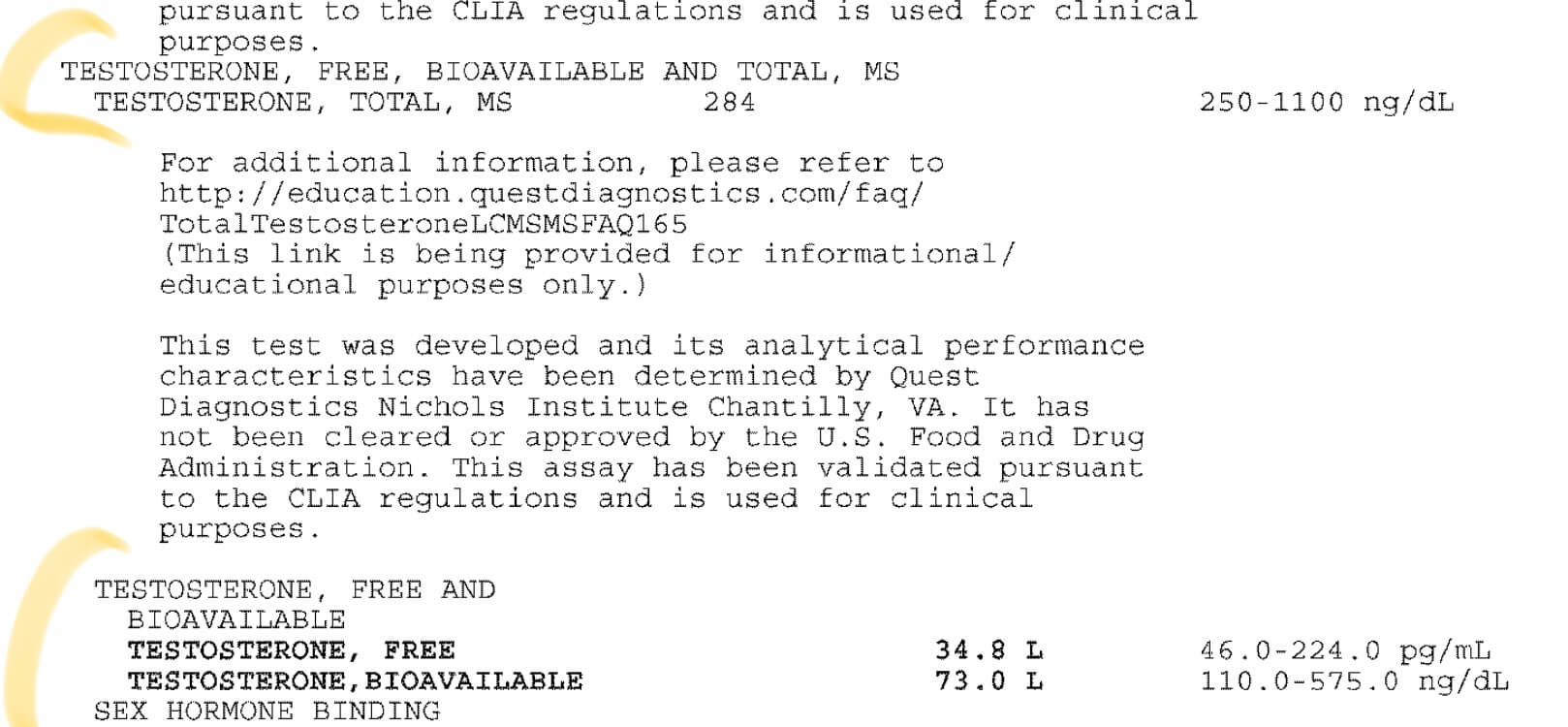
Testosterone levels in men have been dramatically declining over the past few decades. In fact, in the 1940s, testosterone levels in men were approximately twice as high as they are today.
The reason? Aside from dangerous lifestyle factors — such as consuming a diet high in processed carbs, a lack of exercise, chronic stress and low-quality sleep — I strongly believe that xenoestrogens play a part in that decline.
That belief is informed by numerous scientific studies, including this one from Environmental Health Perspectives, a journal supported by the National Institute of Environmental Health Sciences.
If you’ve been following my blog, you probably know that I live a relatively healthy and performance-oriented lifestyle. But despite my serious commitment to optimizing my health and fitness, I suffered from low testosterone levels. And I didn’t understand why until I read Dr. Anthony Jay’s book Estrogeneration.
In the book, Dr. Jay digs into decades of science about how the xenoestrogens we’re exposed to on a daily basis make us fat, sick and infertile. He also provides strategies on how to reduce our exposure.
We decided to implement most of Dr. Jay’s recommendations at the Kummer household because two of my blood tests from 2020 showed testosterone levels between 250 and 320ng/dL.
While that’s still within the “normal” range, it’s much too low for a healthy and active adult of my age (I’m 39 as of this writing), as confirmed by the anti-aging specialist I’m working with. Instead, my levels should be somewhere between 800 and 1200ng/dL — which is in line with normal levels from 50 years ago.
Low testosterone often leads to reduced sex drive, low bone density, erectile dysfunction, poor recovery after physical activity, loss of lean muscle mass, fatigue, obesity and depression, among other issues.
3. Depression
One of the most common misconceptions about testosterone is that having low levels of the hormone is only a problem for males. To the contrary, disruptions to the endocrine system can cause hormonal imbalances in women, leading to higher rates of depression.
In fact, one study of 3,124 overweight premenopausal women linked depression to their excess body weight and concluded that a testosterone imbalance was likely the culprit.
Another study, conducted on elderly men, showed “a significant inverse relationship between serum testosterone levels and depressive symptoms.”
In other words, the men with the lowest levels of testosterone showed the most symptoms of depression.
4. Infertility and Feminization of Males
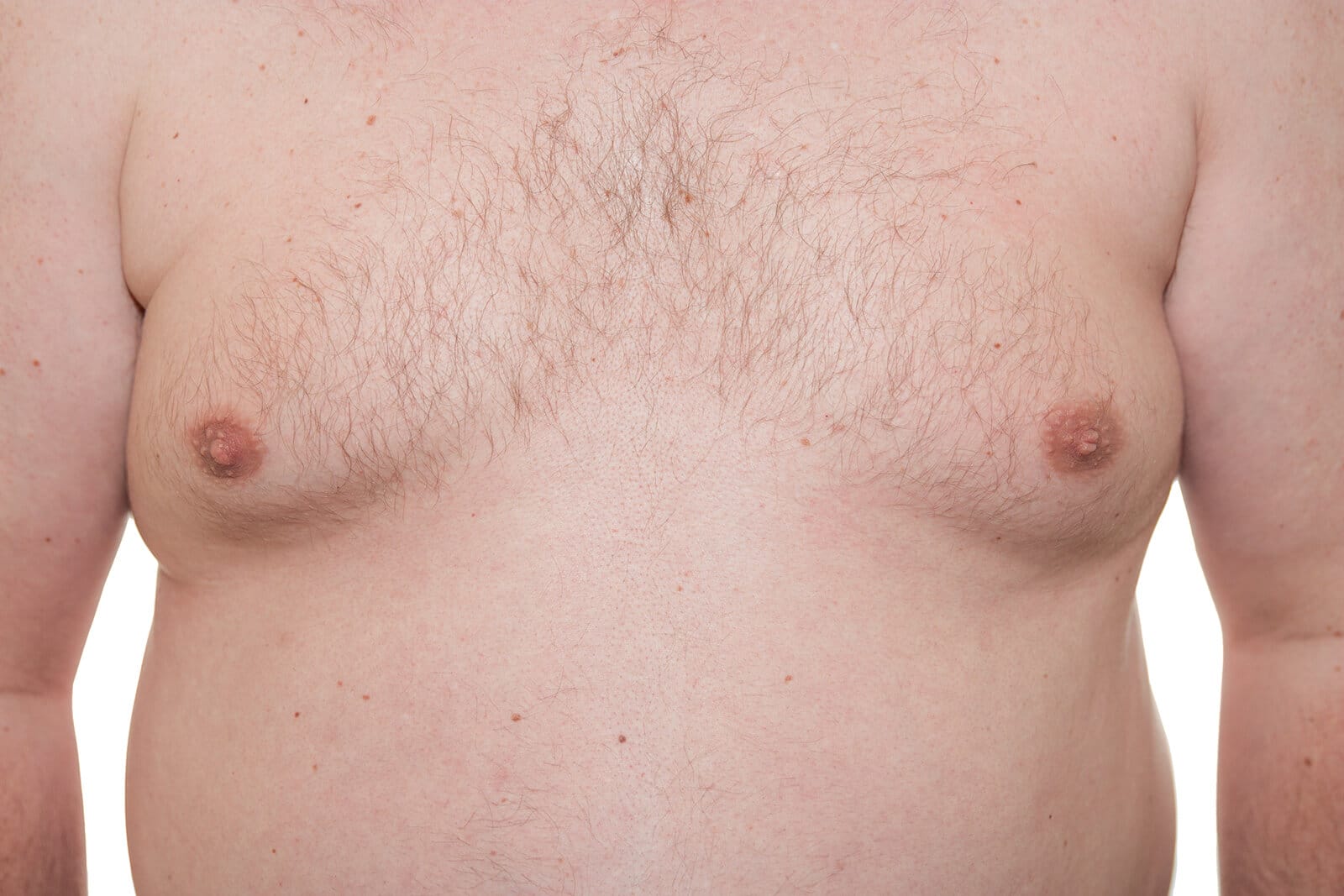
Environmental factors, including exposure to xenoestrogens, negatively impacts the reproductive health of humans and animals and leads to the feminization (e.g., man boobs) of males.
This isn’t news. Scientists have known this since at least 1996, as demonstrated in a study titled “Male Reproductive Health and Environmental Xenoestrogens.”
The authors of that study concluded that “male reproductive health has deteriorated in many countries during the last few decades,” and confirmed that during the same period, semen quality declined (while the rates of testicular cancer increased).
This is notable because male feminization is a side effect of the negative impact xenoestrogens have on the male reproductive system.
Interestingly enough, these observations apply to both humans and wildlife. As we’ll learn below, certain xenoestrogens also cause reproductive issues in rats, while others turn male frogs into females.
But we don’t have to go as far back as 1996. In 2005, a study observed a phenomenon referred to as “gender-bending,” which is another term for male feminization.
In that study, the authors concluded that toxic chemicals mimicking the female hormone estrogen “can disrupt the development of baby boys, suggesting the first evidence linking certain chemicals in everyday plastics to effects in humans.”
5. Immune Dysfunction (Premature Births, Allergies, Etc.)

Based on everything I’ve learned over the past few years, it appears that we still don’t know much about how exactly the immune system works. But one thing seems clear: there has to be a proper balance between immune system activity and inactivity.
If you have allergies or an autoimmune condition, your immune system is in overdrive and may even attack your own body (as is the case with Lupus). The other extreme is a suppressed immune system that can’t defend against invading pathogens.
What’s interesting is that estrogenic hormones possess both immunostimulating and immunosuppressive properties.
That’s important, because you wouldn’t want your body to destroy fetal cells during the early stages of a pregnancy. In this situation, estrogen suppresses the immune system, thus allowing the fetal cells to grow and develop into a baby.
Unfortunately, that well-balanced process of immune system suppression and stimulation can go haywire, leading to the attack of healthy cells in your joints (in the case of a lupus flareup) or the inability to destroy cancer cells.
That’s exactly what xenoestrogens do: they confuse your immune system, leading to an increased risk of premature birth, a higher likelihood of autoimmune diseases, allergies and more.
Interestingly enough, cases of allergies in the United States have been rising steadily since 1995, as have pre-term births, which now affect at least one in 10 newborns according to the CDC.
I just wish I had known about the impact of estrogenics on our immune function and reproductive health before my wife got pregnant with Lucas, our youngest child; maybe we could have prevented his premature birth at 30 weeks and six days, and his 57-day stay in the neonatal intensive care unit.
6. Blood Clotting
Estrogenics increase your risk of blood clots (also known as thrombophilia), because they influence coagulation factors and related pathways.
That’s why all oral contraceptives list that as a risk factor in their physician notes — as you can see in the example of Yaz, a popular birth control pill that contains ethinyl estradiol (a synthetic estrogen).
Fortunately, there are effective non-hormonal contraceptives available, such as certain intrauterine devices (IUDs). These devices have fewer side effects and can often remain in place for a decade or more.
7. Cancer
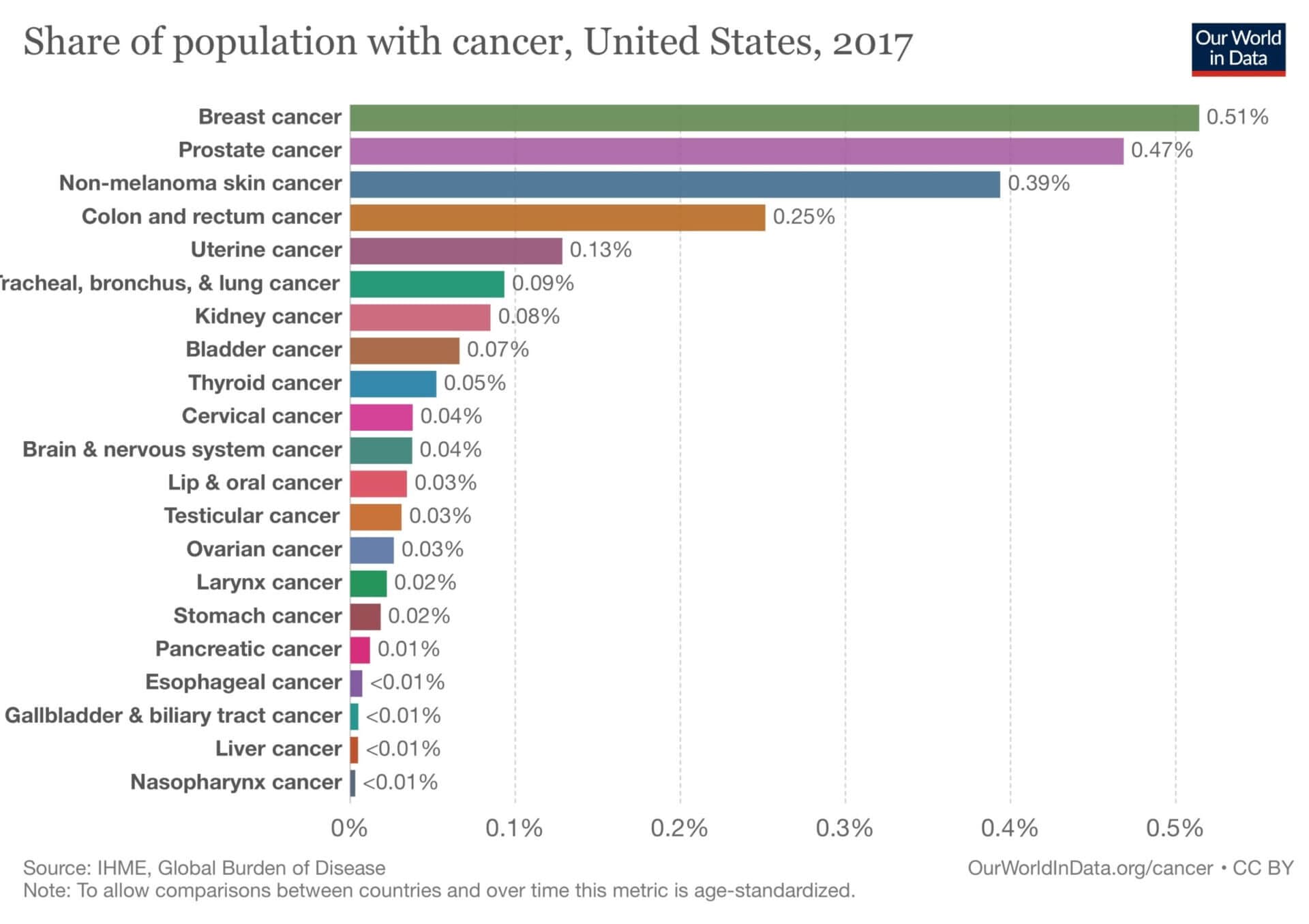
There is growing concern within the scientific community that environmental estrogenic compounds increase the risk of certain types of cancer, such as breast cancer.
That’s because studies have shown that estrogenics play an important role in the initiation and progression of cancer. They also appear to reduce the effectiveness of anti-cancer medication.
The authors of the study I linked to above also discovered that Bisphenol A (the BPA in plastic), as well as 17 β-estradiol (an estrogen), induce the transformation of human breast epithelial cells to enable them to form progressively growing tumors.
The underlying mechanisms of how estrogentics increase the risk of developing cancer aren’t entirely clear. But it appears that they negatively influence the immune system and cause genomic and epigenetic alterations. In turn, that can lead to widespread cell damage that enables cancer cells, through ancient survival mechanisms, to proliferate.
What’s even more concerning is a finding from a 2012 study on rats that concluded that exposure to the birth control hormone ethinyl-oestradiol (EE2) during pregnancy “increases mammary cancer risk in several generations of offspring.”
On a side note, the same study also concluded that feeding mice with corn oil — a popular cooking oil that is high in inflammatory omega-6 fatty acids — increases the risk of cancer.
I shouldn’t have to say it, but that doesn’t mean eating a high-fat diet, such as the ketogenic diet, increases your risk of cancer; it just means that consuming industrial seed and vegetable oils does.
That’s the primary reason why I’m so vocal about the importance of removing seed oils from your diet.
The bottom line is that there’s sufficient evidence that exposing yourself to xenoestrogens increases the risk of cancer for you, and potentially for future generations. That should be reason enough to try and reduce your exposure to these environmental toxins.
Top 10 Xenoestrogens You Should Try to Avoid
Below is a list of the 10 most common xenoestrogens/estrogenics you’re likely exposed to every day from the food you eat, the water you drink, the medication you take, the personal care products you use and plastic containers you store your food in.
1. Mycotoxins
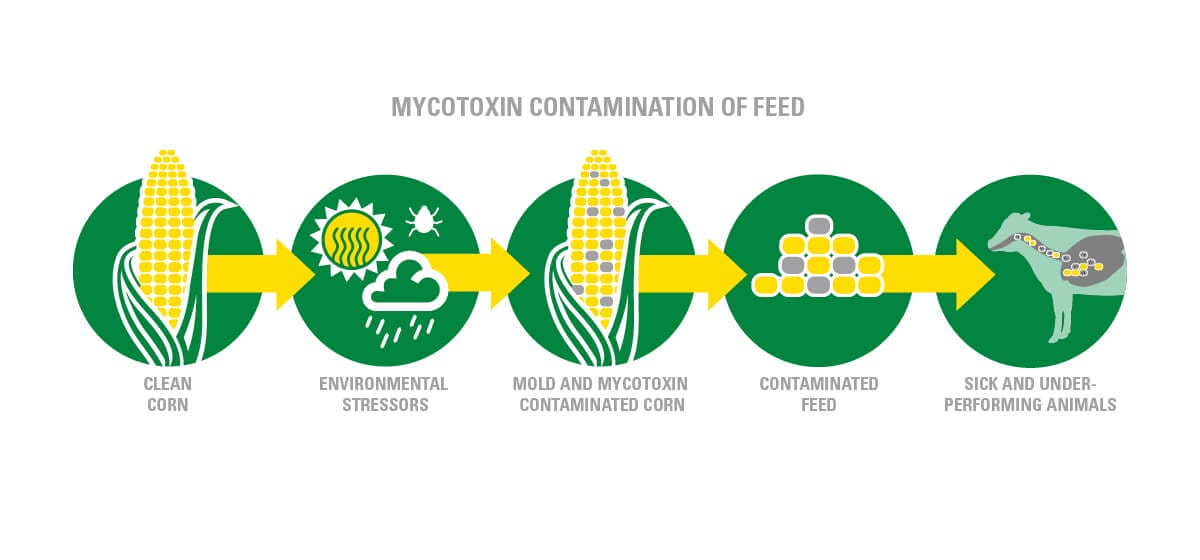
Mycotoxins, such as aflatoxin and zearalenone (ZEA), are fungal metabolites that grow in damp and dark places — like the massive grain and peanut storage containers used on monoculture farms, for example.
Scientists have confirmed that mycotoxins damage human cells and DNA, cause cancer, and can cause a variety of reproductive disorders in farm animals — a realization that has led many scientists to suspect that mycotoxins (such as ZEA) are also major endocrine disruptors in humans.
If you eat grains or certain legumes — such as wheat, corn or peanuts — you’re consuming these mycoestrogens. However, the problem with ZEA (as with its cousins) is that it makes its way into our food chain through multiple channels.
In other words, you might be exposed even if you don’t eat grains and legumes, because these substances are used as animal feed. As a result, these toxins end up in the fat and muscle tissue of grain-fed animals — including cows, pigs and chickens.
That’s why I highly recommend consuming only 100% grass-fed beef and pastured-raised pork.
Finding high-quality chicken meat is much more difficult, because even pasture-raised and organic chickens are usually fed a soy and/or corn-based diet. That’s one of the reasons why we’re getting our own backyard chickens — so we have full control over what they eat.
If having a backyard flock isn’t in the cards for you, I recommend reducing your intake of chicken meat (unless you know what the bird was fed).
2. Atrazine
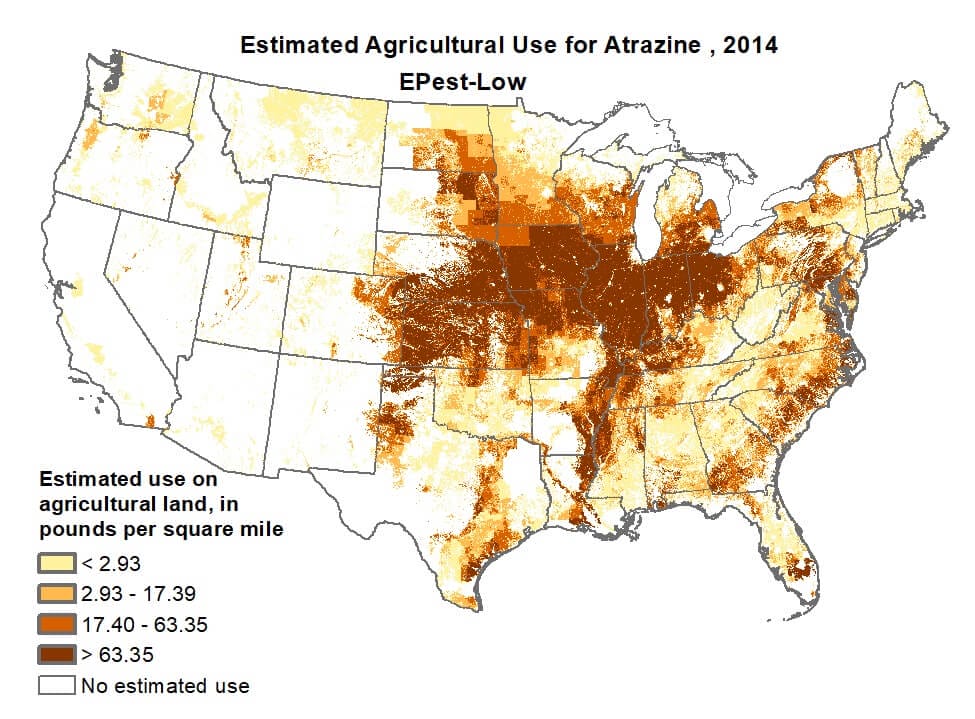
Atrazine is the second-most-common herbicide used in the United States (glyphosate is first) and is regularly used to spray grains (and corn in particular).
Fun fact: Atrazine has been illegal in Europe since 2004 but it’s still used in the United States as of this writing.
That’s a problem because, according to a study by UC Berkeley, atrazine can turn male frogs into females by reducing their testosterone levels by a factor of 10.
As a result of its popularity, atrazine ends up in the grains we eat. But it also ends up in our drinking water.
That’s absolutely nuts, and it should be enough reason to do everything you can to reduce your exposure to this herbicide — such as by avoiding grains and filtering your water.
In another study, scientists demonstrated that atrazine in our water system can lead to adverse birth outcomes, such as the child being small for its gestational age, having a low birth weight and pre-term birth.
Coincidentally, these are all conditions our son Lucas was diagnosed with. As a result, I highly recommend filtering your drinking water to reduce your exposure to Atrazine.
3. Triclosan and Alkylphenols (APEs)
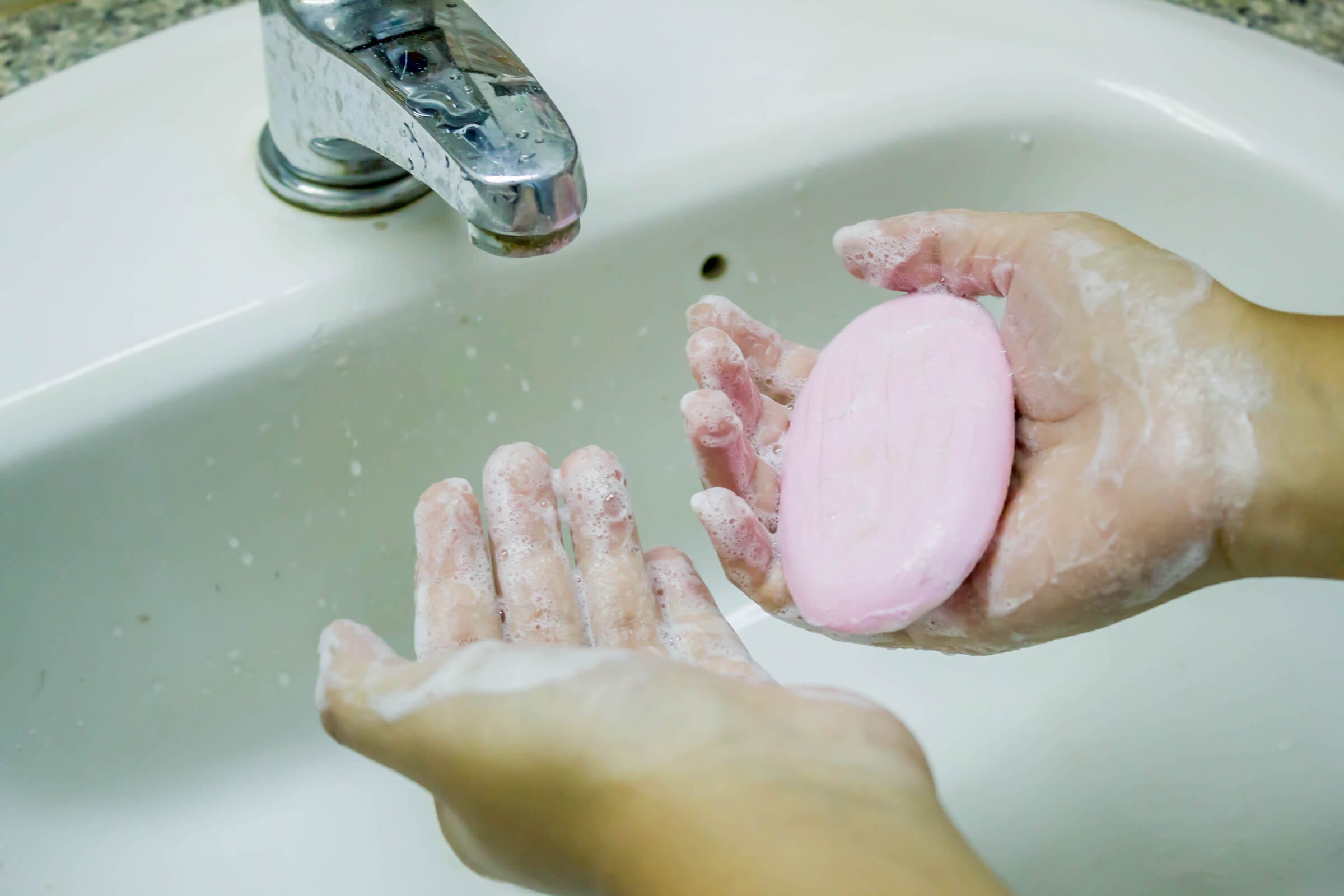
Triclosan and APEs are both common ingredients in personal care products such as toothpaste, mouthwash, hand sanitizers, soaps and lubricants.
While the European Union has banned many alkylphenols, the United States is (as always) lagging behind by allowing manufacturers to put those toxins in their personal care products.
Note: Triclosan was banned from soap products by the FDA in 2016 but it remains in use in other personal care products, such as hand sanitizers.
The problem with triclosan and APEs (such as nonylphenol) is that they get absorbed by the skin in concentrations that lab studies have shown are high enough to cause mitochondrial dysfunction and reproductive and developmental defects in infants.
Other studies involving children and pregnant women have shown that the exposure to triclosan from antibacterial hand soaps and toothpaste negatively impacted thyroid hormone levels, sex hormone levels and the timing of puberty (and also increased asthma symptoms).
Another issue with APEs is that they’re lipophilic as opposed to hydrophilic. That means they’re more likely to bond with fat than with water molecules. So if you sanitize your hands with a product that contains APEs, those toxins will remain on your skin — even if you wash your hands with water afterward.
From there, they can enter your bloodstream through your skin and wreak havoc on your endocrine system.
I recommend using only “estrogenic-free” personal care products, and making sure the products you buy don’t include ingredients that contain the term “phen.”
4. Benzophenone (BP) and 4-Methylbenzylidene (4-MBC)
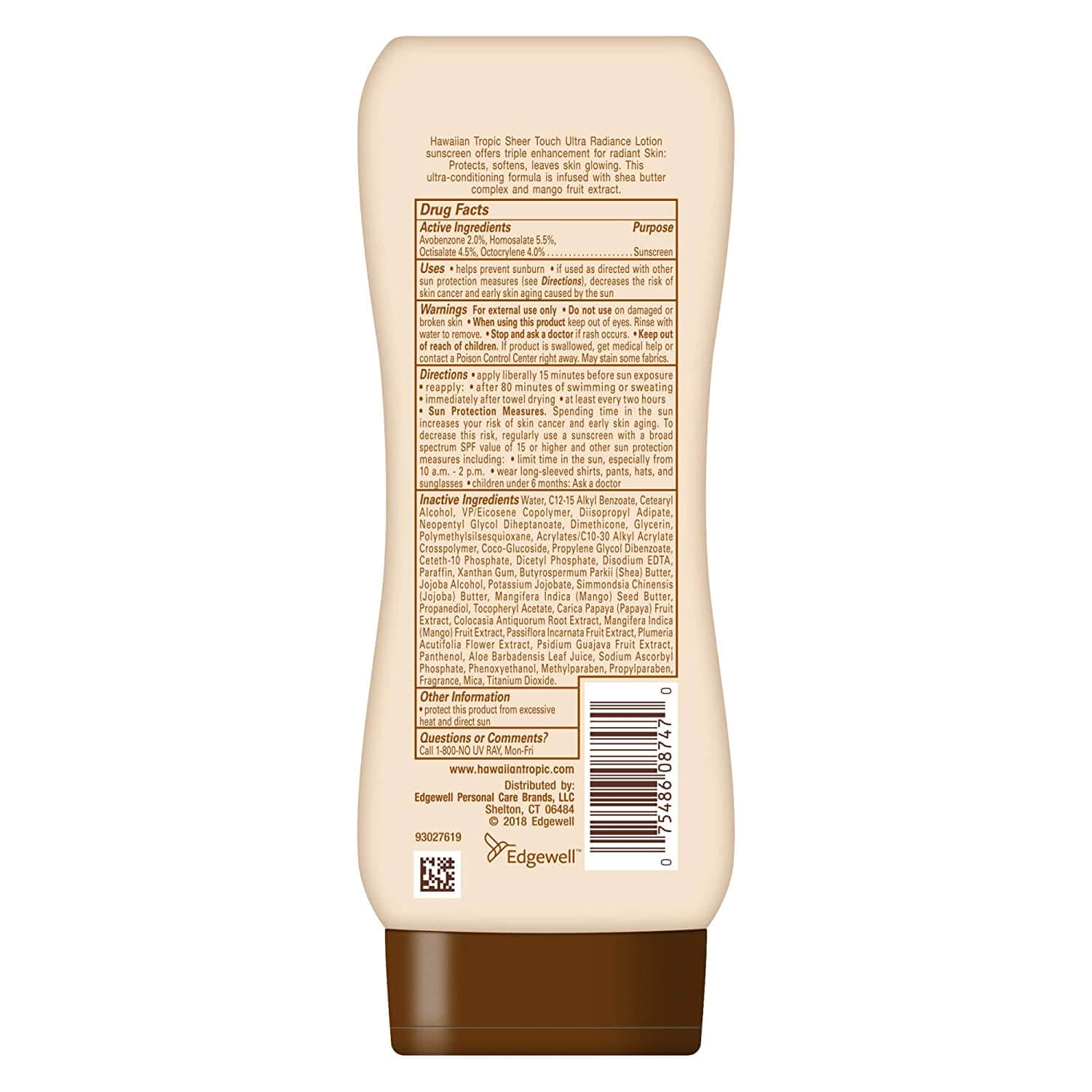
BP and 4-MBC are “sunscreen estrogenics” that you can sometimes find even in organic sunscreen.
The most popular of the bunch is oxybenzone, which is a major endocrine disruptor as confirmed by a recent review of the most endocrine-disrupting UV filters.
My recommendation is to stay away from any product with ingredients that contain the words “benz” or “phen.”
Instead, look for clean, mineral-based sunscreens. Or better yet, learn how to avoid sunburns naturally, and skip sunscreens altogether.
5. Food Dyes
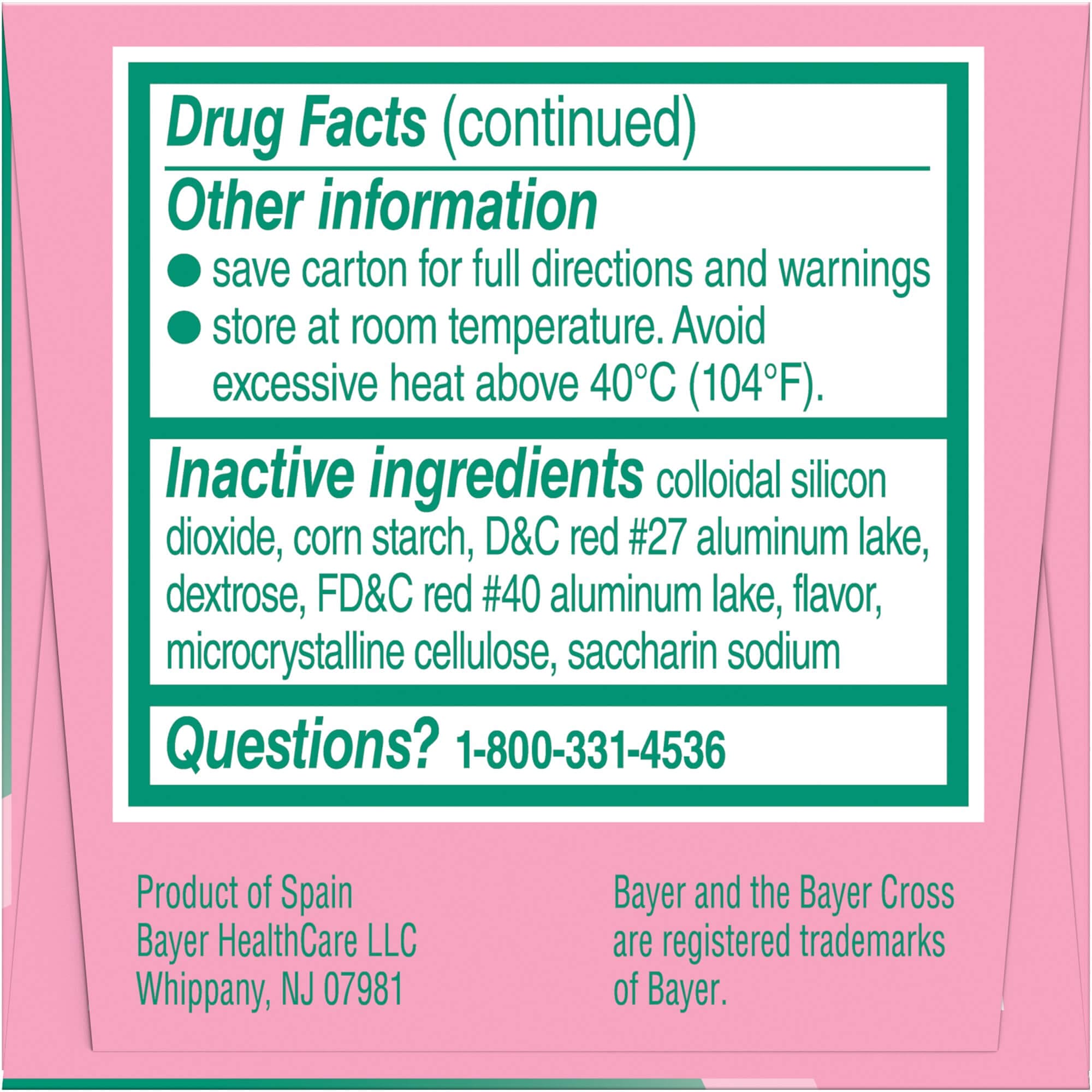
Scientists have determined that certain artificial food colors, including Red No. 3 and Red No. 40, have estrogen-like growth stimulatory properties and could be a significant risk factor in human breast carcinogenesis.
That’s why I recommend staying away from any processed foods that contain artificial ingredients, such as artificial preservatives, colors and sweeteners. That way, you won’t have to worry about all the pseudonyms these artificial colors hide behind.
I also recommend checking any over-the-counter or prescription medication you might have in your household. I’ve found artificial food dyes in pills and liquid non-steroidal anti-inflammatory drugs (NSAIDs), such as ibuprofen.
Additionally, I’ve found artificial colors in some of the old skincare products we used when our daughter was still a baby.
6. Parabens

Parabens are found predominantly in personal care products like cosmetics, perfumes, shampoos and lotions, but they are also in scented candles.
In a nutshell, any product that contains “fragrances” likely contains parabens. In fact, the word “fragrances” is usually a collective term for hundreds of different chemicals, including endocrine-disrupting toxins.
Researchers have found reduced sperm quality as well as changes in the prostate, testicles, ovaries and breast development in both male and female rats that were exposed to parabens.
That discovery led the European Union to ban five parabens from skincare products, and it should be enough reason for you to stay away from products that contain these endocrine-disrupting toxins.
Personally, I don’t want to wait for human studies to confirm what animal studies have already demonstrated: parabens screw with our reproductive system.
I recommend avoiding all products that have fragrances on their ingredients list, unless they specifically mention that the fragrance used is only from natural sources, such as essential oils.
Speaking of essential oils, stay away from lavender because it’s highly estrogenic!
7. Phthalates

Phthalates are a common group of chemicals used in the manufacturing of plastic to make it softer. You can find these toxins in products such as wall coverings, vinyl floorings, toys, the gloves you wear when washing dishes, plastic food wraps and even perfume.
Besides direct exposure, scientists have found phthalates in food sources such as grains, beef, pork and chicken (because they leach into water bodies and soil and are thus consumed by plants and animals).
The problem with phthalates is that they negatively impact your reproductive health, leading to poorer sperm quality and a shorter anogenital distance (AGD), which is an indicator of abnormal male reproductive tract masculinization in boys.
Additionally, exposure to phthalates has been shown to trigger and worsen the symptoms of asthma.
What’s mind-boggling is that many medical devices are made from PVC plastic that contains phthalates. Just imagine what that can do to immunocompromised patients receiving radiation or chemotherapy together with an extra dose of estrogenics from their plastic medical devices.
My recommendation is to remove as much plastic as possible from your environment.
8. Bisphenol A and S (BPA/BPS)
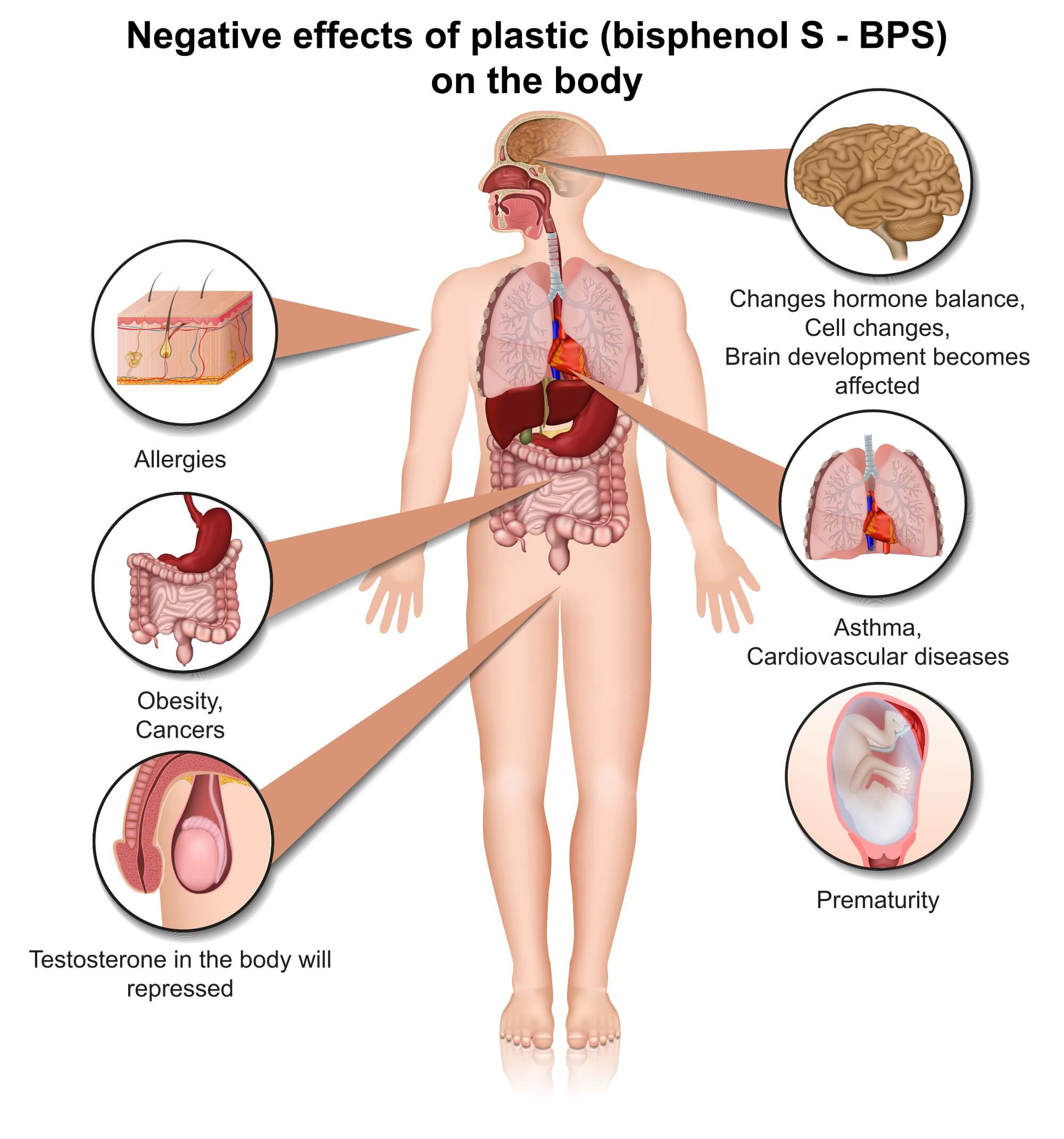
I’m sure you’ve seen the “BPA-free” label on water bottles and other plastic products. Bisphenol is another common additive used in the production of plastics, and it too has endocrine-disrupting properties.
When the word got out about the dangers of BPA, manufacturers did what they always do: they found a quick alternative without worrying about its health implications.
In the case of BPA, manufacturers switched to Bisphenol S (BPS), which is equally toxic and has a higher dermal penetration capacity than BPA based on studies with rodents.
But since most consumers have never heard of BPS and its health implications, manufacturers continue using it.
As with parabens, however, I don’t want to wait until the scientific community confirms that BPS is an endocrine disruptor in humans; the signs of that are already on the wall.
My recommendation is to stay away from plastic products, regardless of whether they’re labeled BPA-free.
9. 17a-Ethinylestradiol (EE2)
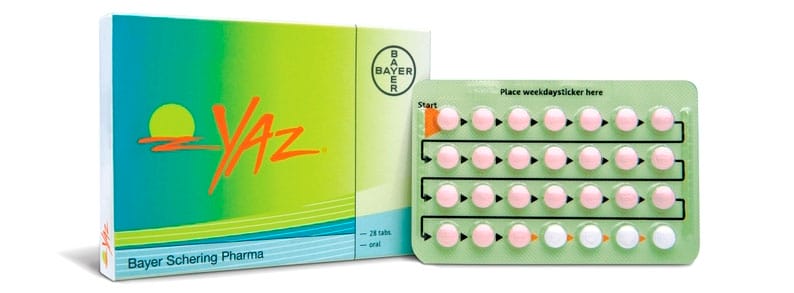
EE2 is the most popular ingredient used in hormonal birth control pills. By definition, and as the name already implies, EE2 is a potent estrogen that disrupts the female endocrine system with the purpose of preventing an unwanted pregnancy.
The problem with all synthetic estrogens, including EE2, is that they interfere with the balance of the endocrine system by mimicking or antagonizing the effects of endogenous hormones, by altering the synthesis and metabolism of natural hormones, or by modifying hormone receptor levels (source).
That leads to the issues we’ve discussed throughout this article, including reproductive issues, growth of adipose tissue, inability to reduce your body fat, increased risk of developing cancer and more.
While I certainly appreciate the benefits of birth control for society, and for women in particular, you should be aware of the unwanted side effects these products have on your reproductive system.
To get an idea of all the possible side effects of oral contraceptives containing EE2, take the time to read through the drug sheet of Alessa.
Another problem with EE2 is that it ends up in our drinking water by way of urination, because most water treatment plants don’t test for or filter it out.
At first, I couldn’t believe that. But when I checked with the Fulton County Water Authority, which is responsible for providing the drinking water in our suburb of Atlanta, they confirmed that they do not test for any birth control hormones.
The problem is that scientists haven’t completely figured out how the compounding and cumulative effects of estrogens and other toxins in water affect humans in the long run. But if studies demonstrating the feminization and reproductive disruptions in fish are any indication, synthetic estrogens, such as EE2, can’t be good for your health — even in low concentrations.
The authors of the study linked to above labeled EE2 immunotoxic to fish. That means the “small” amounts of EE2 in our lakes and rivers are toxic to their immune systems.
Do you really want to wait for a study to tell you how many years you can drink EE2-tainted tap water before accumulating enough that it becomes immunotoxic for you?
10. Phytoestrogens
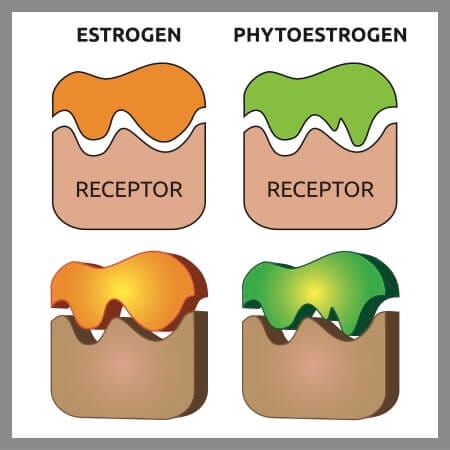
“Phyto” means plant. Thus, phytoestrogens are estrogenic chemicals that naturally occur in plants. When you eat certain plants, your body gets naturally exposed to these phytoestrogens (and other toxins, such as antinutrients).
The good news is that if you’re healthy and have an optimally functioning gut microbiota (which most Americans don’t), then the bacteria in your gut can destroy some of these estrogenics before they get into your bloodstream.
A good indicator of a well-tuned microbiome is the absence of disease and suffering. If you’re overweight and have high blood pressure or other metabolic issues, there is a good chance that your gut microbiome is out of whack.
However, if your gut microbiome isn’t functioning optimally or if you overindulge in over-processed plant foods that contain extremely high levels of phytoestrogens (e.g., fake meat burgers or vegan protein bars), there is a real risk that you’re poisoning yourself with these plant toxins.
Soy isoflavones (the estrogenic compounds in soy) have already been linked to developmental issues, thyroid toxicity and cancer in rats.
The authors of the same study also concluded that, “the possibility that widely consumed soy products may cause harm in the human population via either or both estrogenic and goitrogenic activities is of concern.”
The first problem with most food-related studies is that they’re observational and thus only prove correlation, not causation.
The second problem is that most food studies are either sponsored or influenced by industrial stakeholders, such as manufacturers of soy products.
For example, a 2015 paper on the benefits of soy consumption found a (statistically) “significant but tiny” positive impact on bone calcium retention in postmenopausal women.
One of the authors of this study (Connie M. Weaver) is on the advisory board of Pharmavite — the maker of SoyJoy energy bars. Another author (Stephen Barnes) holds a patent on a special formulation of estrogenic soy isoflavones.
In other words, it’s very difficult to get a clear picture of how soy and its byproducts cause us harm.
In cases where there’s a dearth of reliable information, I go back to what we’ve learned about and through human evolution.
Our ancestors and early humans didn’t consume large amounts of soy (or other plants, for that matter); plants were a survival food consumed between successful hunts. So it’s conceivable that our bodies haven’t evolved to deal with the amount of processed junk/plant food many of us consume today.
I’m referring to things like fake meat burgers, vegan cookies or protein bars, vegan pizza and other products that include plant-based fats and proteins instead of their healthier, animal-based versions.
That’s why I recommend that you don’t overindulge in plants, and that you avoid those that have the highest levels of phytoestrogens, such as soy and flaxseed.
How We Reduced Our Exposure to Xenoestrogens
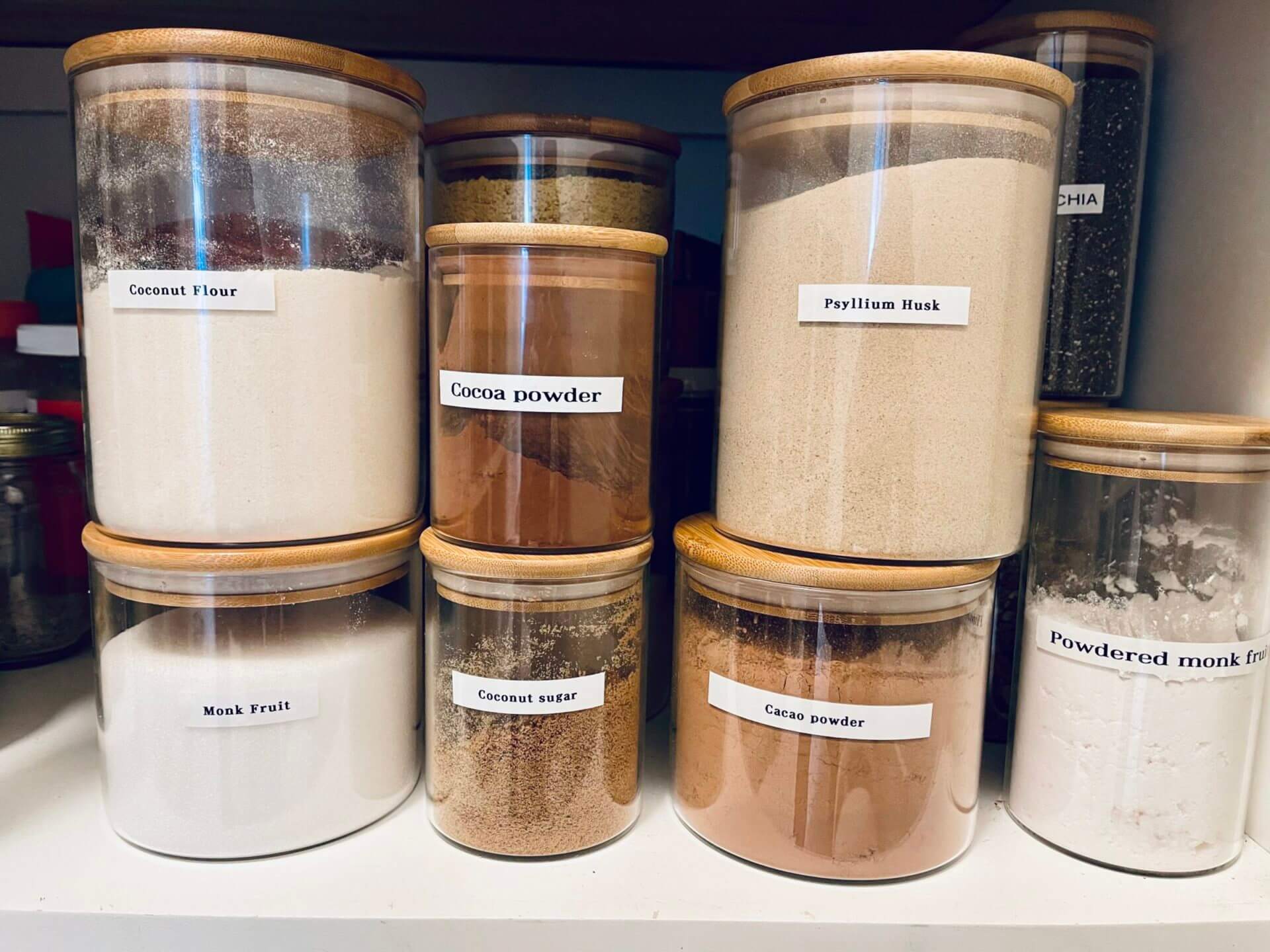
At the Kummer household, our goal isn’t to completely eliminate our exposure to xenoestrogens. As you’re probably aware by this point in the article, that would be a futile strategy given their prevalence.
Scientists have even found estrogenics in polar bears. If they can’t avoid exposure, then neither can we.
Instead, our goal is to significantly reduce our exposure to levels that our bodies can (hopefully) manage.
I touched on many of the steps we’ve taken in the environmental toxins section of my article titled “How to Live a Healthy Lifestyle.”
But considering their importance, these steps are worth repeating and expanding on here.
Note that we had already implemented some of these steps long before we discovered the negative impact estrogenics can have on our health. For example, we started reducing the use of plastics for environmental reasons several years ago, and we’ve been filtering our drinking water because we didn’t like the smell of chlorine.
In the video linked below, I walk you though some of the safe, non-toxic products we’ve started using around the house.
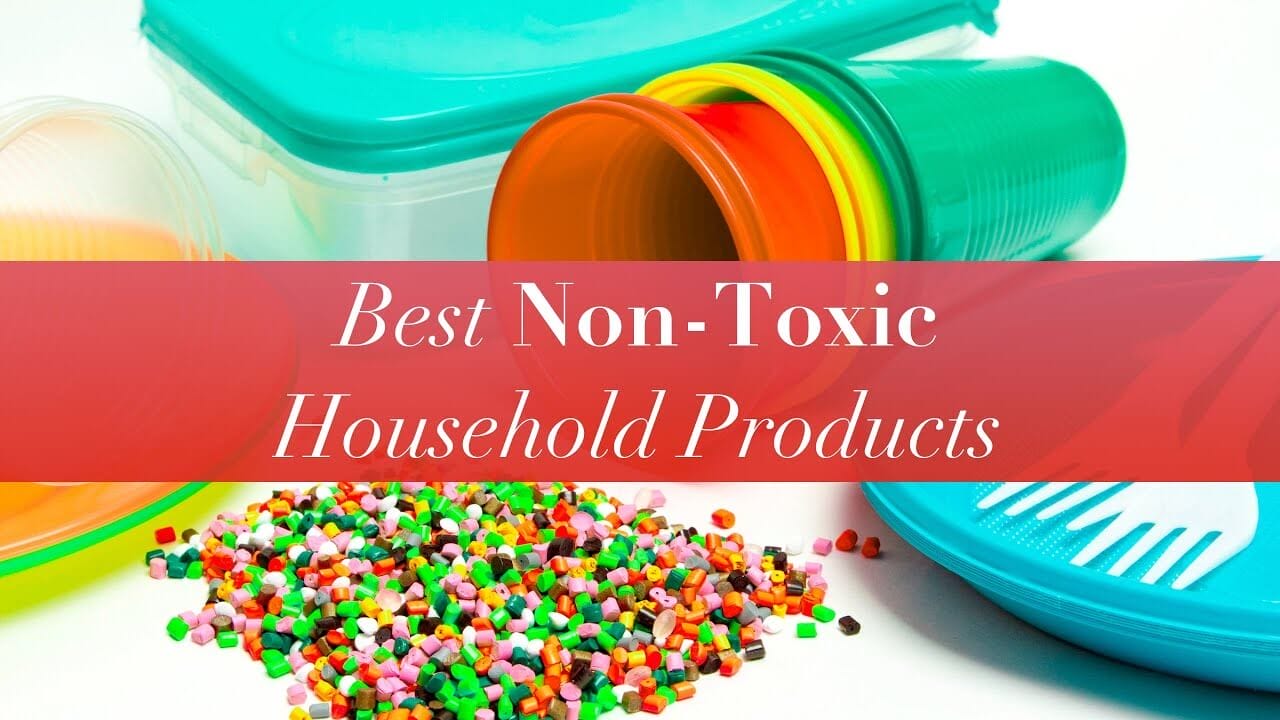
Here are some of the key steps you can take to significantly reduce your exposure to endocrine-disrupting chemicals:
- Filter your drinking water. All you need is a charcoal filter, but I an under-the-sink reverse-osmosis water filtration system that remineralizes the water, like the one have from Radiant Life. (We also have a whole-house water filtration system.) If you use a water pitcher with a built-in charcoal filter (e.g., a Britta), pour the filtered water into a glass bottle immediately rather than leaving it in the plastic pitcher.
- Stay away from plastic water bottles. You don’t know how long the water has been in that bottle, whether or not it has been exposed to heat, and how many chemicals have leached into the water.
- Replace your plastic food storage containers. Instead, use products made out of glass or silicone.
- Avoid foods that are high in estrogenics. Many grains (and also peanuts) are contaminated with mycotoxins, a fungus that grows in grain storage facilities. Other foods, such as soy and flaxseed, are high in phytoestrogens and should be avoided.
- Buy estrogenic-free skincare products. Most skincare products are loaded with toxins and should be avoided. When shopping, avoid products that have fragrances or that include the terms “phen” or “benz” on their ingredients list.
- Avoid sanitizers with triclosan and all antibacterial soaps. The latter usually contain alkylphenols.
- Avoid buying food shipped in plastic wraps or containers. That’s especially important for cooking oils and other liquids, such as dairy milk. For refrigerated or frozen food, move them to glass containers or silicone-based freezer bags when you get home.
- Look for natural fibers in bedding and clothing. We try to stick to cotton undergarments (especially for the kids) and we use only 100% cotton sheets in our bed.
- Avoid foods that include artificial ingredients. Artificial ingredients, and certain food dyes in particular, are highly estrogenic.
- Avoid pharmaceuticals with dyes. Red food dyes are also often present in pills and liquid medication.
- Consider the use of non-hormone-based contraceptives, such as copper-based intrauterine devices (IUDs).
- Stop using scented candles and air fresheners: The synthetic fragrances (and natural lavender) in air fresheners (and the expensive candles you bought at the mall) contain estrogenics that can make you sick. If you must, stick to pure beeswax candles or essential oils (not lavender).
- Buy organic fruits and veggies. Buying seasonal organic fruits and veggies reduces your exposure to pollutants like estrogenic herbicides (such as atrazine) and insecticides and pesticides (such as dichloro-diphenyl-trichloroethane, also known as DDT).
- Be wary of BPA-free products. If a product is labeled as BPA-free, it often means that the manufacturer used BPS instead (which is equally estrogenic).
- Eat less poultry. Most “free range,” “all natural,” and/or “organic” chickens are fed arsenic because it acts as an antibiotic. While organic arsenic is an essential nutrient for humans and naturally occurs in soil, water and air, inorganic arsenic is a toxin and a strong estrogenic. The issue is that organic arsenic can transform into inorganic arsenic in animals, and that’s what you end up eating.
In a nutshell, you can take a huge step forward by filtering your drinking water, reducing plastic in your environment and buying “clean” personal care products.
Frequently Asked Questions
One of the best resources on the subject I’ve found is Dr. Anthony Jay’s book Estrogeneration, which you can pick up on Amazon. It’s an eye-opener, and it started me on my journey of removing estrogenics from my family’s environment.
The amount and rate of estrogenic leaching depends on several factors, including the type of toxin, the ambient temperature and the temperature of the container’s contents. In general, leaching can occur immediately and often continues for several weeks, as demonstrated in this study involving BPA, phthalates and water bottles.
Heat significantly increases the rate at which estrogenic chemicals leach into food or beverages. One study found that when plastic drinking bottles were exposed to boiling hot water, BPA (an environmental estrogen) was released 55 times more rapidly than before exposure to hot water.
Yes, most plastics contain estrogenic chemicals, such as BPA, BPS, phthalates and others. Most plastics labeled as BPA-free contain BPS, which is equally bad.
I’m a proponent of sensible sun exposure. In other words, I recommend exposing yourself to sunlight without sunscreen for 20 minutes or less every day.
If you have to stay in the sun for extended periods but don’t have access to a non-toxic sunscreen, I’d use the toxic sunscreen. However, mineral-based sunscreens are so ubiquitous these days that consistent use of toxic products shouldn’t be necessary.
All plastic bottles are made with chemicals that mimic the sex hormone estrogen, thus increasing the estrogenic activity in our body when we drink contaminated water. As a result, I highly recommend that you avoid drinking bottled water (unless it comes in a glass bottle).
I encourage you to download the Think Dirty app, which we often use to check out or find non-toxic products.
Polychlorinated biphenyls (PCBs) are endocrine-disrupting chemicals that are now banned in the United States, but which were used heavily a few decades ago in the manufacturing of plastic resins and carbonless copy paper.
The problem is that many estrogenic chemicals and contaminants, including PCBs, have a very long half-life and you can still find them in fish, meat and dairy products (as well as many waterways).
Unfortunately, no! For example, alkylphenols don’t have to be listed on the label of antibacterial soaps. Additionally, manufacturers can include the word “fragrances” on the ingredients list without having to spell out the exact chemicals they used to produce that fragrance.
Indeed, testosterone levels in men have been declining for thousands of years. But we’ve seen massive drops in the past 50 years — a timeframe that coincides with the introduction of synthetic estrogens in our environment.
While that’s just a correlation and it doesn’t imply causation, I choose to err on the side of caution. Based on past experience (think lead paint), it’s usually only a matter of time until we’ve figured out that man-made chemicals aren’t good for us.
Plus, there is plenty of scientific evidence (as mentioned throughout this article) that xenoestrogens negatively impact the reproductive health in animals and humans alike. Abnormally low levels of the sex hormone testosterone are merely one of the indicators that our reproductive system isn’t functioning optimally.
While soy itself isn’t a xenoestrogen, it contains isoflavones (such as daidzein, genistein, ODMA and equol) and lignans (such as enterodiol and enterolactone) that have estrogenic properties.
Considering how much exposure we have to estrogenics overall, I don’t see a need to add isoflavones and lignans to the list by consuming soy and its byproducts.
I haven’t seen any studies suggesting that phytoestrogens increase your endogenous estrogen levels. But they are estrogenic by definition, and can thus increase estrogenic activity in your body.
The problem with food-related studies is that most of them are observational in nature. So instead of placebo-controlled double-blind studies, most food studies rely on observation and food intake questionnaires to draw a correlation (which is different from causation).
What makes the situation even worse is the influence of food manufacturers on these studies. As a result, it’s almost impossible to find well-designed research on the impact of soy among the dozens of studies that were sponsored by the food industry.
My take on phytoestrogens is simple: there’s nothing in plants that have phytoestrogens that is essential to my health. So I avoid them, and I suggest you do too.
The human body has mechanisms to remove environmental toxins via sweat and urine — mechanisms that date back millions of years.
All you have to do to support your body in the removal of xenoestrogens and other environmental toxins is to significantly reduce your continuous exposure to them. Additionally, hydrate well and break a sweat every day. That’s all there is to it.
What doesn’t help is overindulging in certain foods that some people think can detoxify your body — especially not flaxseed (as some recommend), which is estrogenic!
As the name implies, butylparaben is a paraben and one of the ingredients in many skin care products you should stay away from because it’s been shown to be a potent endocrine-disruptor with immunotoxic properties that can cause allergies and other issues.
As a rule of thumb, I recommend staying away from any ingredient that has “paraben” in its name, including methylparaben, ethylparaben and others.
While maintaining a proper diet is certainly important for your health and to support your body’s defenses, I don’t think that loading up on certain (plant-based) antioxidants is going to mitigate the damaging effects of xenoestrogens. Your best mitigation strategy is to reduce your estrogenic exposure.
Wrap-Up: How to Deal with Endocrine Disruption
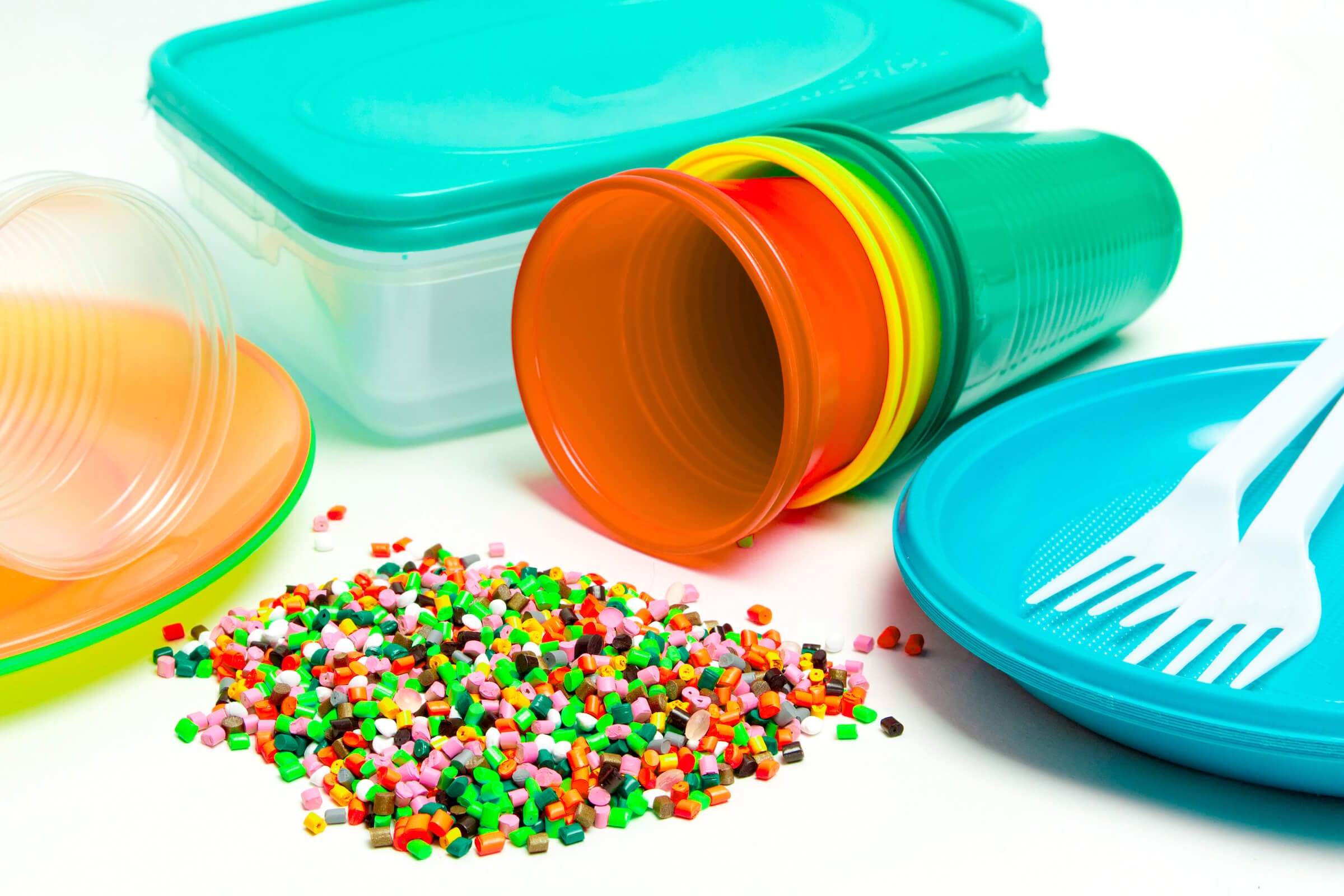
My wife and I were shocked and disheartened when we learned about the negative health impacts of xenoestrogens.
We both thought that shifting our dietary habits to something that would mimic how our ancestors had been eating for millions of years (paleo/keto/carnivore) would be our last big lifestyle change.
We were wrong.
It took us a few weeks to go through the five stages of grief and admit something we had known all along:
- Just because a product or ingredient is legal doesn’t mean it’s safe or healthy.
- Most manufacturers don’t give a crap about what’s good for their customers, animals or the environment — as long as it’s legal, they’re fine selling the product.
- Product labels are misleading. Just because a product is labeled as “all natural,” “plant-based,” “all vegetarian-fed” or something similar doesn’t mean it’s free of toxic ingredients.
- There are exceptions to these rules, but it’s up to you to find them.
Once we got over the initial shock, we knew what we had to do: apply the same due diligence when buying household products as we apply when buying food.
Additionally, we took inventory of all the toxic items we had in our household and immediately replaced the worst offenders, including plastic food containers and skincare products we use every day.
Everything else, we started replacing at a slower pace to limit the financial impact. As of this writing, we still have a few items at home that we know aren’t great for us, including synthetic clothing or acrylic glassware that we barely use.
The bottom line is this: don’t freak out, and don’t set unrealistic goals like removing all estrogenics from your environment.
Remember, if a polar bear can’t do it, neither can you. Instead, find a reasonable approach that you can start implementing today; one that’s sustainable and that doesn’t break the bank.
Most importantly, enjoy the process and every step you make in the right direction.
Now I’d like to hear from you! Did you know about the dangers of xenoestrogens before reading this article? If not, how do you feel about fake estrogens and their impact on your health? Let me know by leaving a comment below!

Michael Kummer is a healthy living enthusiast and CrossFit athlete whose goal is to help people achieve optimal health by bridging the gap between ancestral living and the demands of modern society.

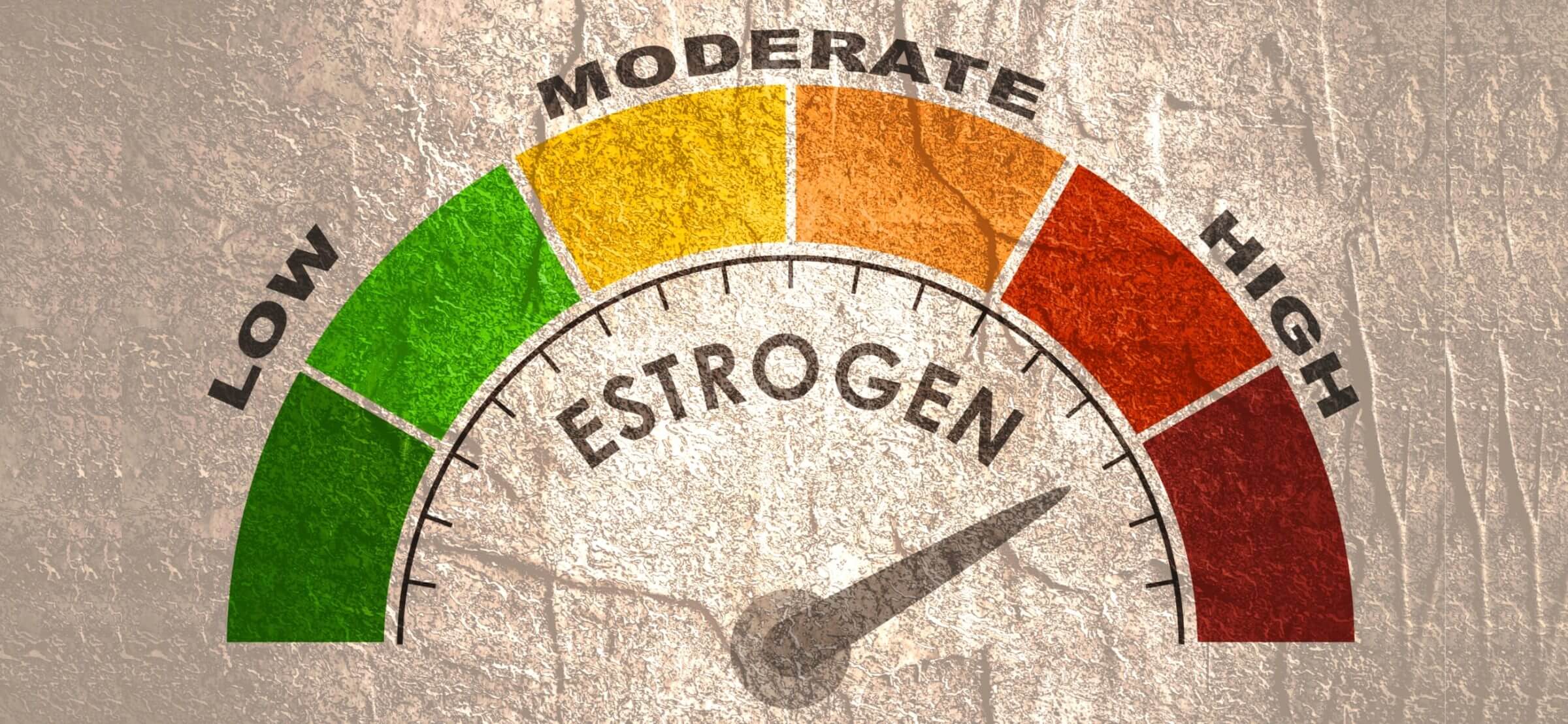

I did know about this and I read Dr. Jay’s book too! I was surprised to see you read about this and came across you through Keto dieting, not this. But somehow I found this in your articles. Yes, the grief is so real. The mycotoxins sort of snagged me. It makes eating a high-protein diet more difficult with yet another protein source down, but it’s probably for the best.
If you want to check out another book, it is called Building Health by Joseph Allen and John Macomber. It is an excellent read. They talk about how dust is hormonally active and recommend things like vacuuming often, as well as being mindful of washing clothes and drying them delicately so the fibers do not break off as much and into the air (to be ingested), but they also go into building infrastructure, indoor air quality, and many other useful things. I’d be interested to see if you have another good read of your own.
This is probably one of the biggest changes our world might struggle with. Everyone uses plastic. Everyone uses chemicals, and they’re pretty tightly woven into our daily lives. Our dependence on it will probably take a long time to shift. Thanks for posting this.
Thanks so much for your feedback and book recommendation. I’ll check it out!
Disambiguation needed…
You write “ Another issue with APEs is that they’re lipophobic as opposed to hydrophobic. That means they’re more likely to bond with fat than with water molecules. ”
The correct wordings needed seems to be lipo and hydro philic not “phobic”. In the context the use of the words written reads as APE’s are lipid repelling versus being water repelling, when it seems what was intended was to convey they are lipid attracting versus being water attracting- according to the subsequent sentence anyways, it clearly states they are lipid attracting.
Unless I’m missing something please disambiguate.
Great catch, thanks, Nick!
Thank you! Really great info!
Thanks very much Michael
Great article
Very well written
Have known about Xenoestrogens for approx 30x years & like yourselves I try to keep my exposure to a minimum
Credit to you & the informative way you wrote your article – you kept me reading to the end. Thank you for a couple of Gems
You’re most welcome Suzanna!
Thanks very much for this comprehensive information, which I will share with my loved ones.
You’re most welcome!